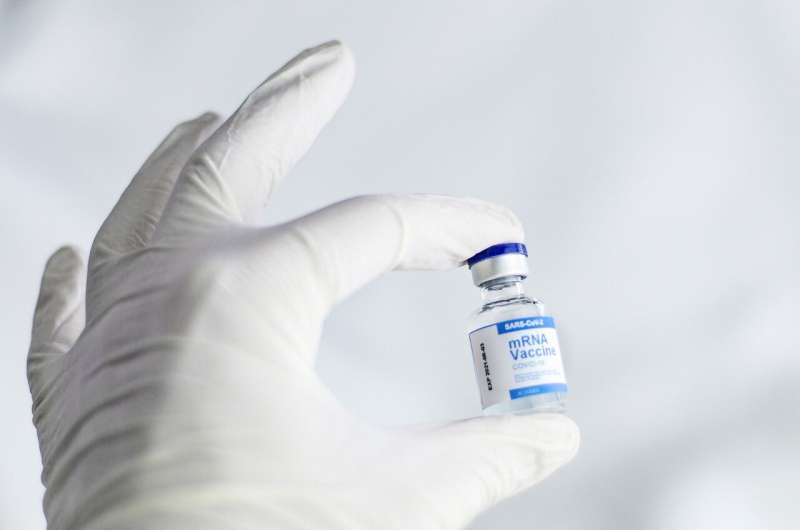‘Inaccurate’: COVID vaccine disinfo fuels medical myths


Disinformation around COVID vaccines has existed as long as the jabs themselves.
Unverified studies, unproven claims and out-of-context data are regularly shared on websites and social media across the globe—fuelling dangerous myths about the virus and the vaccines.
As Austria becomes the first European Union country to make vaccines mandatory this week, AFP looks at some common disinformation surrounding the jabs:
Causation vs chronology
A common concern about the COVID vaccines is that they can cause harm, or even death, to those who get them.
Some websites claim to link health risks to the jabs. Others offer information that is then used by people as alleged proof that vaccines are dangerous.
The US Vaccine Adverse Event Reporting System (VAERS) is a database that reports alleged harm caused by vaccines.
The website is open to the public, and anyone can submit a report.
But VAERS makes it clear that it cannot be used as proof of vaccine harm.
“A VAERS report does not necessarily mean that a vaccine caused the health problem, only that the symptoms occurred after vaccination,” it says in its search engine training video.
If a symptom occurs after vaccination, it does not necessarily mean that the symptom occurred as a result of the vaccination—a matter of causation versus chronology.
The VAERS site makes it clear that reports “may contain information that is incomplete, inaccurate, coincidental, or unverifiable”.
But VAERS data has been used by French politician Martine Wonner to claim 54 American children had died as a result of COVID jabs.
Wonner used the data to argue that French children should not be vaccinated.
Leading medical bodies in the United States and Europe have said that rare side effects can occur as a result of some of the vaccines—blood clots or myocarditis, for example—but that the benefits of taking the jabs outweigh the risks.
Immune system and infertility
Other common medical myths have no scientific proof but persist, for example that the vaccines can weaken the immune system, cause infertility or modify our DNA.
A December post from a US website claimed COVID-19 shots caused something called “vaccine acquired immune deficiency syndrome”, citing a study.
But the study in question—which covered waning effects of vaccines over time—made no mention of any such “syndrome”.
One of its authors confirmed to AFP that the post amounts to “misinformation”.
The bogus health claims don’t end there.
One video created in 2020 that continued to be shared online into 2021 claimed that “97 percent of corona vaccine recipients will become infertile”, citing a “Big Pharma whistleblower”.
But infertility is not cited as a side effect in any vaccine so far—for coronavirus or anything else.
“There’s no vaccine in the world that can cause infertility,” Katharine White, an obstetrics and gynaecology professor at Boston University School of Medicine, told AFP when asked about the matter last year.
Claims about some vaccines altering DNA have also taken hold online.
They involve mRNA vaccines, which tell the body to produce proteins that resemble those of the virus instead of using a component or modified virus, as seen in the flu vaccine, for example.
The technology has led some to believe untrue claims that the vaccines interfere with people’s genes.
But our genes are located in a special part of our cells called the nucleus, and mRNA jab material does not access that part of our bodies.
That means it is impossible for the material to reach our DNA.
Stretched statistics
Statistics surrounding vaccines are often taken out of context or distorted to show they are ineffective.
In France, for example, some people point to official figures that say there are more COVID cases in vaccinated people than in unvaccinated people.
But since such a large portion of France’s population is vaccinated—more than 75 percent—it is not surprising that COVID cases are occurring among the vaccinated.
COVID vaccines are known to help prevent severe illness and death—but they do not necessarily prevent the virus from spreading.
That means that cases still occur among the vaccinated, and there will be more cases among the vaccinated if a greater number of people are vaccinated.
And if, for example, 100 percent of a population is vaccinated, any occurrence of infection or hospitalisations will be among the vaccinated.
Source: Read Full Article